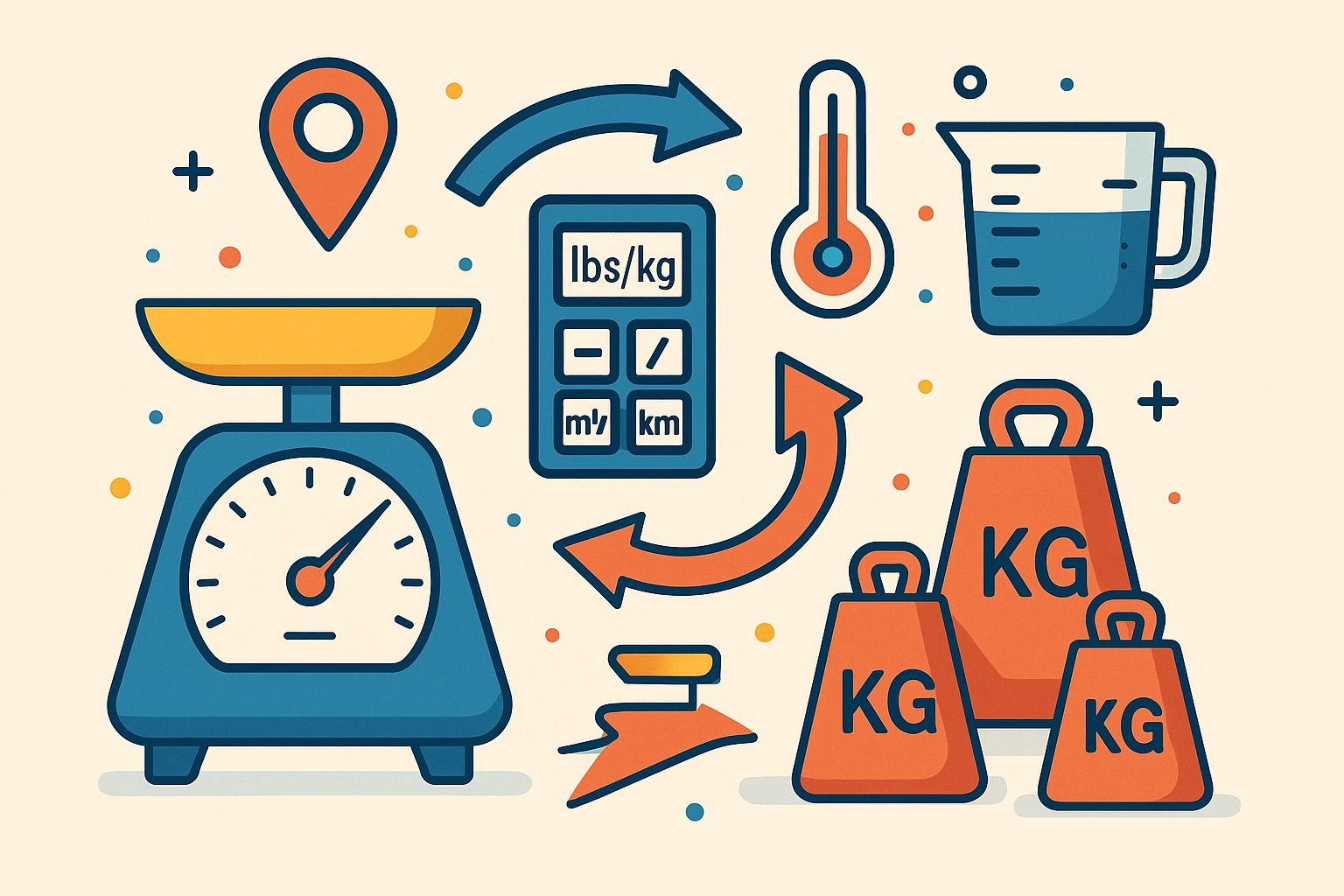Understanding Carb Cycling and How It Transforms Your Fitness Journey
When it comes to dieting and optimizing your fitness goals, carb cycling is a strategy that’s become a game-changer for many. Whether you’re looking to lose weight, maintain your current body composition, or build muscle, carb cycling offers a unique approach that’s centered on adjusting carbohydrate intake to align with your activity levels. This method allows you to cycle between high and low-carb days, ensuring that you’re fueling your body at the right times while also encouraging fat loss.
Carb cycling is often discussed in fitness circles, but its true potential is frequently misunderstood. How can you use carb cycling to your advantage? The answer lies in understanding how to calculate your carb intake and how to optimize it for your specific goals. A carb cycling calculator is one of the easiest ways to figure out your personalized carb intake needs, taking into account your body, activity levels, and nutrition goals.
In this article, we’ll dive into what carb cycling is, how it’s calculated, and why it’s become such a popular strategy for achieving fitness and health goals. We’ll explore the mechanics of a carb cycling calculator and how it can help you fine-tune your diet for optimal results. Let’s break it all down in a way that’s creative, motivational, and educational—because you deserve to understand how carb cycling can elevate your fitness journey.
Carb Cycling Calculator
What is Carb Cycling?
Carb cycling is a dietary strategy that involves alternating between high-carb and low-carb days throughout the week. This practice is based on the idea that varying your carbohydrate intake according to your activity levels can help maximize fat loss, enhance muscle growth, and improve overall energy balance.
The theory behind carb cycling is simple: carbohydrates are the body’s primary source of energy, especially during high-intensity activities like weightlifting or endurance exercise. On high-carb days, you’re providing your body with the energy it needs to fuel intense workouts, which may improve your performance. On low-carb days, your body taps into stored fat for energy, potentially enhancing fat loss and encouraging metabolic efficiency.
The beauty of carb cycling lies in its flexibility. Unlike strict low-carb diets that require you to cut carbs completely, carb cycling allows for strategic consumption of carbohydrates when your body needs them most. This strategy doesn’t just boost fat loss or muscle growth—it also helps you stay energized while maintaining focus on achieving your long-term health and fitness goals.
How Carb Cycling Works
The underlying concept of carb cycling is about adjusting carbohydrate intake in response to your activity levels. On days when you’re more active, your body needs more fuel, so you consume more carbohydrates. Conversely, on rest days or low-activity days, you cut down on carbs to force your body to burn fat for energy.
Here’s how it works in simple terms:
High-Carb Days: These days coincide with intense physical activity, such as strength training, heavy cardio, or long-duration workouts. By increasing your carbohydrate intake, you’re giving your muscles and body the energy they need for recovery and optimal performance.
Low-Carb Days: These days are typically reserved for rest or low-intensity activities like walking, stretching, or yoga. By consuming fewer carbs, your body shifts to using stored fat as energy, potentially leading to fat loss while preserving lean muscle mass.
No-Carb Days (Optional): In some carb cycling programs, there are days with almost no carbohydrate intake. These are generally used in advanced stages or when fat loss is the primary goal. However, not all carb cycling routines include no-carb days—this is optional and should be approached cautiously.
By switching up your carbohydrate intake, you not only support your body’s energy demands based on its activity level, but you also prevent the potential negative effects of long-term low-carb dieting, such as muscle loss or metabolic slowdown.
How Is Carb Cycling Calculated?
To effectively implement carb cycling, understanding how to calculate your carb intake for each day is essential. The calculation process is based on several factors: your weight, activity level, fitness goals, and overall daily calorie needs. A carb cycling calculator simplifies this process, but let’s break it down so you understand the logic behind it.
Calculate Your Basal Metabolic Rate (BMR)
Your BMR is the number of calories your body burns at rest to maintain basic bodily functions such as breathing, circulating blood, and maintaining body temperature. To determine your daily calorie requirements, you need to start with this number. There are a variety of online calculators that can help you estimate your BMR based on your height, weight, age, and gender.
Determine Your Activity Level
Next, you’ll need to assess your activity level. The more active you are, the more calories your body requires to maintain performance and recovery. Here’s how activity levels typically break down:
Sedentary: Little to no exercise
Lightly Active: Light exercise or sports 1-3 days per week
Moderately Active: Moderate exercise or sports 3-5 days per week
Very Active: Hard exercise or sports 6-7 days per week
Extremely Active: Very intense daily workouts or a physically demanding job
Once you’ve assessed your activity level, you can multiply your BMR by an activity factor to get your total daily energy expenditure (TDEE). This gives you the number of calories you need each day to maintain your weight.
Set Your Carb Cycling Targets
The next step in the calculation is to set your targets for high-carb and low-carb days. This typically depends on your fitness goals:
Fat Loss: On low-carb days, you’ll consume fewer carbs to encourage fat burning. On high-carb days, you’ll focus on consuming enough carbohydrates to fuel intense workouts and promote recovery.
Muscle Gain: If building muscle is your priority, you may lean toward higher carb intake even on rest days to support muscle repair and recovery. This ensures your body has the necessary nutrients for growth.
Once you’ve decided on your macronutrient distribution for high-carb and low-carb days, you can allocate the percentage of calories you’ll derive from carbohydrates on each day. For example, high-carb days typically involve around 50-60% of your daily calories from carbs, while low-carb days may consist of as little as 10-30% carbs.
Calculate Your Carbohydrate Intake
Once your daily calorie requirements are established and your carb target is set, it’s time to determine the number of grams of carbs to consume. One gram of carbohydrate contains 4 calories, so you can divide your carbohydrate calorie target by 4 to get the number of grams.
For example, on a high-carb day, you may aim for 300 grams of carbs, while on low-carb days, you may only need 100 grams of carbs. These numbers will vary depending on your specific needs and goals, but understanding this calculation is key to applying carb cycling effectively.
Benefits of Using a Carb Cycling Calculator
Utilizing a carb cycling calculator brings many advantages to your fitness routine. By calculating your personalized carb needs, you can fine-tune your diet in a way that supports your unique goals. Here are some of the key benefits:
Precision: A calculator helps eliminate guesswork. By calculating your carb intake, you know exactly how much you should consume for each type of day, whether it’s high or low-carb. This precision can help optimize results, whether you’re building muscle or burning fat.
Tailored to Your Needs: Everyone’s body is different. A carb cycling calculator considers your weight, activity level, and goals, giving you a plan that’s designed specifically for you.
Supports Performance and Recovery: Carb cycling ensures you have the energy you need for your workouts while helping your body recover during rest periods. This strategic approach allows for more intense training sessions while promoting efficient fat loss.
Flexibility: Carb cycling doesn’t require extreme dietary restrictions, making it easier to stick to over time. With calculated high-carb and low-carb days, you’re able to enjoy a more balanced approach to nutrition while still seeing results.
How to Use a Carb Cycling Calculator Effectively
To get the most out of your carb cycling efforts, here are a few tips on using a carb cycling calculator effectively:
Be Consistent: Stick to your carb cycling schedule. Consistency is key to seeing results, whether you’re focusing on fat loss or muscle gain.
Adjust as Needed: Your body changes over time. As your weight and activity level evolve, it’s important to recalibrate your carb cycling needs. A calculator makes this process straightforward and ensures you’re always on track.
Combine with Proper Exercise: Carb cycling is most effective when combined with an appropriate workout routine. Whether you’re doing resistance training, cardio, or both, the right type of exercise will maximize the effectiveness of carb cycling.
Stay Hydrated and Eat Balanced: Don’t just focus on carbs. Make sure you’re getting a balance of healthy fats and proteins to keep your body in optimal condition for fat loss or muscle gain. Hydration is also crucial to maintaining performance and well-being.
Embrace Carb Cycling for Better Health and Fitness
Carb cycling isn’t just another fad diet—it’s a strategic approach to nutrition that can help you unlock the best version of yourself. Whether you’re looking to build lean muscle, enhance athletic performance, or shed body fat, carb cycling offers flexibility, precision, and a practical way to adjust your diet according to your activity levels.
A carb cycling calculator simplifies the process, helping you understand exactly how much you should be eating on high-carb and low-carb days. It gives you the freedom to structure your diet in a way that supports your unique goals while avoiding the pitfalls of rigid dieting plans.
By embracing the principles of carb cycling, you’re not only optimizing your nutrition but also taking control of your fitness journey. With the right knowledge and tools, carb cycling can be your secret weapon to success. So, get started today—calculate your carb needs, adjust your nutrition plan, and watch as your fitness goals come to life!




